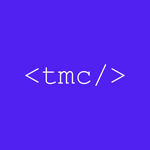Learn More

TeachMeCode InstituteTypically replies within 10 minutes
TeachMeCode Institute
Hello there! 🤝 Welcome to TeachMeCode Institute. How can we help you?
12:06Advancements in DNA storage through epi-bit technology
Why it matters:
In the era of big data, global mass data flow has presented data storage systems with a looming challenge. As DNA has incredibly high storage density - a single gram of DNA can store 215,000 terabytes, the same size as 10 million hours of high-definition video (Imburgia & Nivala, 2024) - and long-term stability, it is an attractive medium for data storage. However, conventional DNA storage relies on de novo synthesis, where nucleotides are added one by one in a fixed order, making the process time-consuming and costly. Zhang et al.'s method enables DNA self-assembly that allows data writing to become parallel and programmable.

Additionally, the epi-bit method can be used by individuals to personalize their DNA storage, as shown by implementation of the method by 60 volunteers from diverse academic backgrounds. This clearly demonstrates the potential Zhang et al.'s epi-bit method has as an accessible, versatile, fast, and low-cost method for DNA storage.
Methodology:
- Information is encoded through selective methylation on cytosine bases in DNA.
- Pre-synthesized DNA fragments, called DNA bricks, are assembled on a reusable DNA strand. Each DNA brick binds to a unique location on the strand.
- The precise binding of the brick guides an enzyme to methylate a specific position on the template, which effectively "prints" the data onto the template.
AI Sales & Lead Generation Engine/Course
AI Sales & Lead Generation Engine
You Will Learn to:
 Certified
Diploma
Certified
Diploma
 3
Hours / Week
3
Hours / Week
 AED 1,999
AED 1,999
- Following the same binary system as computer hardware, each DNA brick carries a methylated or unmethylated site to encode a 1 or 0, respectively.
- Epi-bits are read using a nanopore sequencing device.
Key findings:
- Using the epi-bit method, Zhang et al. were able to write 275,000 information bits onto five templates on an automated platform, with no synthesizing of DNA required, including two high-definition photos of a white tiger and a giant panda.
- On iDNAdrive, a platform created by Zhang et al. that allows users to encode data themselves, volunteers encoded approximately 5,000 bits of data using epi-bit writing kits. The error rate when reading the data was as low as 1.42%.
You might be also interested in

"In 2025, we need to be relentlessly focused on unlocking the benefits of this technology and solve real user problems."
Read More
GITEX Global 2024, which kicked off today at the Dubai World Trade Centre and runs until October 18th, is showcasing next-level innovations in artificial intelligence (AI), cloud computing, and cybersecurity. This year, the event showcases over 6,500 exhibitors and 1,800...
Read More
In July 2024, the digital world got a taste of chaos, courtesy of a flawed content update from CrowdStrike. This tech mishap didn't just cause a few hiccups—it disrupted operations globally, impacting around 8.5 million Windows systems. And yes, the...
Read More